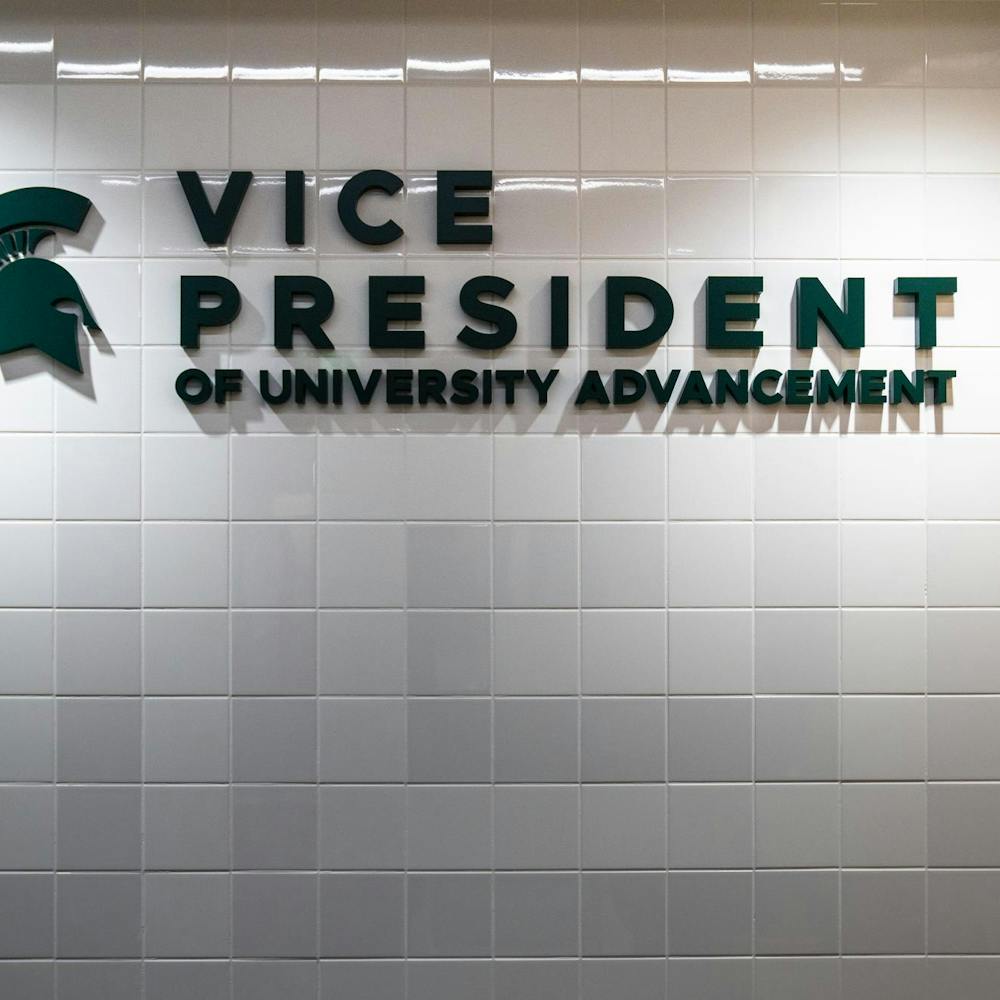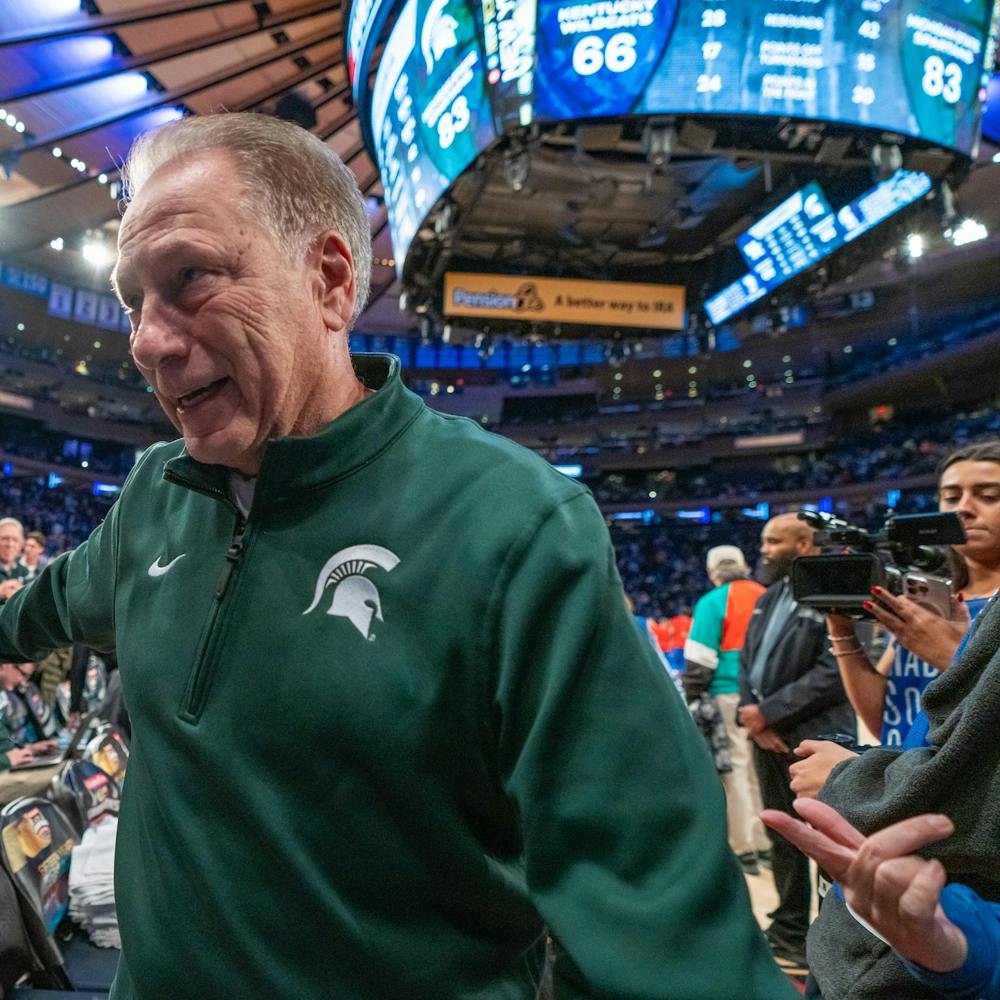“I was absolutely frozen to death the first winter, but eventually I got used to it,” he said.
McGee, who now lives in Connecticut, said he comes back to campus for Homecoming festivities every year no matter the weather to walk many of the same paths he walked when he was a student living on campus in the 1950s.
And even though new buildings have been erected, students have come and gone and times have changed, when he revisits north campus, he still sees the same university he loved.
“My days at MSU were terrific. It was a wonderful time,” he said. “The wonderful thing is the circle hasn’t changed at all.”
The experiences at the university he attended more than half a century ago still remain for McGee. He said MSU provided him with a good basic education, a goal that can be traced back to some of its early days as an agricultural college.
As this year marks the 150th anniversary of the Morrill Land Grant Act of 1862, which enabled the university to expand through federal funding in agriculture and mechanical arts, students and alumni have reflected on MSU’s land-grant past and growth to a world-grant future.
Humble roots
MSU was founded in an age of growing educational interest, but the push to create an institution solely for the purpose of practical agricultural sciences was not without its challenges, MSU history professor Roger Rosentreter said.
The Michigan State Agricultural Society and its secretary John C. Holmes were among those who pushed for an independent agricultural school, although some state legislators wanted to merge the agricultural school with the existing school in Ann Arbor at the time.
But finally on Feb. 12, 1855, Michigan Gov. Kinsley S. Bingham signed the law creating the Agricultural College of the State of Michigan, and preparations soon were under way to begin building the college.
Holmes, who was responsible for early campus planning and planting, reputedly designed the first buildings on campus: a dormitory later dubbed Saints’ Rest after a popular book at the time, and College Hall, the first building erected solely for agricultural education which stood near today’s Beaumont Tower.
Higher education in any field still was a rarity in the mid-1800s, but especially in improving farming practices, and MSU had no precedent for starting a new college, Rosentreter said.
Before the college officially was dedicated in 1857, 63 students had been admitted to the school, and attendance fluctuated in the first several years. The members of the senior class of 1861 also dropped out to join the Union army in the Civil War.
“I think it’s interesting to see how different it was for students back then … but also looking at what was the same,” elementary education senior Kait Gustafson said. “They were from all over the state, (and) they just wanted a chance.”
Gustafson, who is a Spartan Ambassador and leads campus tours, runs a blog — msufacts.tumblr.com — devoted to MSU’s history, and she has done research into MSU’s past, which she equated with researching her family genealogy.
The land grant act
MSU’s first few years were tumultuous, with financial crises and threats of closure or even a potential merge with the University of Michigan, but in 1862 came a federal law that significantly stabilized MSU’s place as an agriculture school.
The Morrill Land Grant Act of 1862, born of a bill sponsored by Vermont congressman Justin Morrill, provided states with federal land to use for educational facilities devoted to agriculture and mechanical arts.
Food industry management senior Jazmin Bolan-Williamson said she has learned about MSU’s history as an agricultural school in some of her classes.
She said MSU’s humble roots and determination shows the dedication to continue making MSU a world leader among land-grant institutions, including Penn State and Ohio State universities.
Support student media!
Please consider donating to The State News and help fund the future of journalism.
“Because we put in so much effort and money and land, by going into other countries, we can (continue to) grow these,” she said of MSU’s innovations and leadership.
Michigan also was a difficult place to start an agricultural school because it was comprised primarily of wooded land with only small family-owned farms in the 1800s. To create a college amid the trees and swamps that made up the Lansing area at the time was a challenge all its own, said Dale Harpstead, former faculty member and chair of the Crop and Soil Sciences Department.
Harpstead, who said he is the product of land-grant education in South Dakota, said the college often was considered an experiment and many people looked negatively on the idea of teaching agricultural sciences to students.
Botanist William Beal, one of the school’s early professors, noted in one of his books that the condition of agriculture in the U.S. in the mid-1800s was not very well off. Plant and soil sciences were neglected, and there was nowhere in the U.S. where these sciences readily were available as a form of study.
Agriculture was viewed more as an art than a science, and specific farming techniques to improve soil conditions or crop yields were relatively unexplored, Harpstead said.
He said many students who opted to go to college were considered renegades who wanted to challenge the world before ultimately coming back to their homes and being farmers, often like their family before them.
But Harpstead also said Beal adopted early farming practices that required agricultural students to get out into the fields and get their hands dirty, changing the way practical agricultural education was available in the U.S.
Bolan-Williamson said if MSU wants to maintain its leadership role in agriculture, it should continue to focus on agricultural innovations, including increasing soil quality and creating hybrid seeds.
A Spartan connection
After doing research for profiles about MSU’s history on her blog, Gustafson said she has become familiar with the characters in the narrative she’s created.
“I feel like I know these guys,” Gustafson said, speaking of Beal in particular. “I don’t actually know him, but I’m talking about him like he’s my best friend, like he’s someone in my family. I get attached to these people I’ve never known — they were dead 100 years before I was born.”
With the groundwork laid by Beal and the other early faculty, agricultural practices picked up beginning in the 1930s and continued growing after World War II, when better tractors and machinery for crop harvesting became more available, Harpstead said.
Also during that time period, MSU President John Hannah surged ahead on expanding the university beyond just an agricultural-based education, adding new residence halls, fields of study and thousands of students to campus.
MSU alumna Roni O’Connor was a freshman in 1960 when these changes were under way. She recalled men and women being able to mingle at extracurricular events for the first time when most other social events were separate.
“It’s hard to think back on the rules because things have changed so much,” she said. “So much more freedom, and it’s easier for us to access things the way they are now.”
O’Connor, who lives in New York today and is a member of the National Board of the MSU Alumni Association, said she has visited MSU often in recent years and has been grateful that MSU’s influence around the world has reconnected her with some of her classmates that she might not have known even at the time of her studies.
By the time Robert McGee left MSU in 1958 to join the Navy, he had gone to the Rose Bowl with the marching band and even gotten engaged. He said many of his greatest memories come from his experiences at MSU, and revisiting campus throughout the years has shown him how much MSU has grown in its 157-year history.
Looking ahead
As MSU celebrated its sesquicentennial anniversary in 2005, Campus Archaeology Director Lynne Goldstein unearthed some telling artifacts from MSU’s past.
She was asked to excavate the area below where Saints’ Rest dormitory once stood, just east of the MSU Museum, despite many people not believing anything was there.
But she and her team found not only remains of the dormitory itself, but also signs of the first students on campus: toothbrushes, ink bottles, even heating stoves. It painted a broader picture of what student life was like in the 1860s.
“People were shocked by what we found,” she said. “We found the building and other stuff, and we were really taken aback that there was this stuff below the surface.”
Goldstein said the artifacts she found provided a more personal dimension of MSU’s history, beyond what is told in the history books.
“I think any historian would say that if you don’t understand who preceded us, there will be challenges,” Rosentreter said.
Acknowledging MSU’s roots in agriculture, MSU President Lou Anna K. Simon has spoken about her “world-grant ideal,” a modernization of the land-grant philosophy that would connect MSU’s research and innovation to other institutions around the world.
“Michigan has the possibility to be a hub for the entire world, given its asset base,” she said at a Council of Graduate Students meeting last week.
She said she and other business leaders from Michigan have developed plans to identify the state as a nexus for food, energy and natural resource technology to branch off of MSU’s status and be recognized globally as a pioneer land-grant institution.
Global studies in the arts and humanities senior Ayla Lienhart said MSU should continue supporting green initiatives that have become associated with the Spartan name.
“It’s really cool that we started off as an agriculture school,” she said.
“It says a lot about the college in the beginning and (how) to start from that and expand.”
View A Historical Look at MSU in a larger map
Discussion
Share and discuss “From the ground up” on social media.







